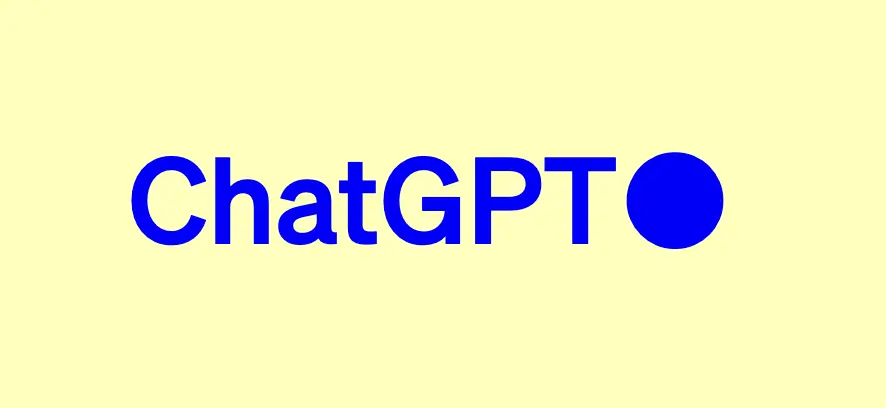As the artificial intelligence boom captures minds and reshapes old ways of working, the spotlight is now upon the technology powering these transformative tools.
Because behind the scenes, it’s not some vaguely described “artificial intelligence” doing the heavy lifting. It’s a new technology called large language models, or LLMs. And for those considering a career in data analytics or tech, understanding the capabilities and applications of LLMs is essential.
In this comprehensive but jargon-free guide, we’ll define large language models, how they work, and their potential use cases.
Because while they’re already well-known for their ability to generate human-like text, LLMs also have many other applications. Excitingly, this technology is still in its infancy, meaning the most promising innovations are yet to come.
To help you get to grips with what is an LLM, we’ll answer the following questions:
- What is a large language model?
- 7 popular large language model examples
- Use cases of LLMs
- How do LLMs work?
- How to use large language models in data analysis
- Large language models FAQ
Ready to dive deep into the world of large language models? Then let’s jump in.
1. What is a large language model?
In a nutshell, a large language model (LLM) is a natural language processing computer program.
LLMs are primarily known for driving popular AI tools such as Open AI’s ChatGPT and Google’s Gemini.
Trained using artificial neural networks—which aim to mimic the intelligence of the human brain—large language models can generate natural-sounding and largely accurate text outputs.
And, unless you’ve been living off the grid, you’ll no doubt be aware that these tools are transforming everything in the world around us, from how we conduct online searches and consume information to how we carry out our jobs.
But behind these seemingly simple tools, large language models are the real workhorses. These sophisticated systems can execute complex constellations of algorithms to understand text inputs and generate human-like text in response.
Transformer models
Large language models belong to a family of systems called “transformer models”.
This is a type of architecture initially proposed in 2017, and subsequently developed to analyze existing text and generate new content. Transformer models are powerful language engines that break sentences down into tiny chunks, digest the meaning of each chunk, and then reassemble them into coherent text.
This machine-learning breakthrough paved the way for LLMs, which took the transformer concept and ran with it, expanding it to an incredible scale.
Did LLMs eat the internet?
The large language models we now use have been trained on mountains of text.
You may occasionally hear that they’ve “read the whole internet”. While this may not be precisely true, it gives a good sense of their size.
Being trained on such massive datasets, LLMs have absorbed grammar rules, vocabulary, and the nuances of language. And with this immense knowledge, they can assist us in writing, answering questions, making predictions, and even understanding the mood behind words.
The best part? They’re constantly improving, making them indispensable tools both in the world of data analytics and beyond.
2. 7 popular large language model examples
OK, so we’ve got an idea of what large language models are. But what are some examples?
You’ll no doubt have heard of AI assistants like ChatGPT and Google’s Gemini (formerly Bard). However, these household names merely represent the interactive frontend of the technology—the interface that makes them accessible for all to use.
Behind these accessible frontends loom various large language models. Some are open source, and some are privately developed. Here are seven well-known ones:
GPT (Generative Pre-trained Transformer)

The GPT family of models, developed by OpenAI, are powerful language models known for their ability to generate coherent and contextually relevant text.
The model first associated with ChatGPT—when it launched in November 2022—was GPT-3. Meanwhile, the newer GPT-4 is more accurate, creative, and reliable at complex problem-solving. Future models will no doubt refine GPT’s abilities further still.
LaMDA

LaMDA is a large language model developed by Google.
It was designed—like OpenAI’s GPT models—to engage in more nuanced and coherent conversations with Google’s search users via its Gemini tool.
Within six months of Bard’s launch, the LLM behind the technology was replaced by Google’s more sophisticated PaLM 2 model. In early 2024, it was replaced again by Gemini, which is multi-modal (it can interact with image and video as well as text).
LLaMA

LLaMA (Language Model for Multilingual Audience) is one of Meta (formerly Facebook)’s entries into the large language model market!
It’s notable for being one of the first proprietary models to provide multilingual communication, bridging language barriers to enable smoother cross-language conversation. Unlike the other entries on our list so far, it’s only used for non-commercial research purposes.
BLOOM

Although it has been largely superseded by models like LLaMA, BLOOM is another large language model focused on multilingual communication.
Crucially, BLOOM is the first on our list not to have been developed by a private big tech company—rather, it’s an open-source model developed collaboratively by researchers, with its code and resources available for public consumption.
XLM-RoBERTa
XLM-RoBERTa is an extension of its predecessor, the RoBERTa model, which in turn is built upon the BERT model.
Again, this model has been pre-trained on vast amounts of multilingual text data. It’s open source and has been modified numerous times, making it a prime example of how different models inform the creation of new, more sophisticated ones.
XLNet
First proposed and released in 2019, XLNet is one of the earliest modern LLMs to garner attention.
While it’s largely considered out of date compared to newer models (although this is up for discussion, as it depends on what the model is used for) it was one of the first to build upon the new transformer architecture.
ELIZA
ELIZA, one of the earliest chatbots (from the 1960s), is not a large language model and is incredibly basic by today’s standards.
However, it pioneered the concept of natural language interaction, so I felt it deserved a little mention on our list. You can even read the original proposal of the model from 1966!

It’s important to note that the seven LLM examples I’ve just given you are just a handful of the available ones that exist.
But what should be clear from this list is that large language models evolve at a dizzying rate. New ones are constantly emerging, building upon what came before.
As time goes by, even more advanced models will appear on the scene, so keep your eyes peeled for the latest developments!
3. Use cases of LLMs
While initially making headlines for their uncanny ability to write human-like text, LLMs have capabilities far beyond mere content generation.
While this remains their core function, their ability to analyze human language and understand context means they apply to a range of tasks, including:
Text summarization: Large language models are excellent at analyzing long pieces of text and producing coherent summaries, making it easier to extract key information from lengthy articles, documents, or reports.
Chatbots and conversational assistants: LLMs help chatbots engage in natural language conversations with their users. In this case, they’re often used for customer support, information retrieval, or task automation.
Spelling and grammar correction: LLMs can correct spelling and grammar errors in written text, improving readability with minimal effort.
Translation: Large language models are very good at translating text from one language to another, enabling effective communication regardless of linguistic barriers.
Recommendation systems: Although we often associate large language models with consumer-oriented applications, they have uses in the business domain, as well. A great example is how online retailers and streaming services use them to analyze user preferences. They can then provide personalized recommendations for products (e.g. Amazon) movies (e.g. Netflix) and music (e.g. Spotify).
Code generation: LLMs can help programmers generate code, taking the heavy lifting out of their work and allowing them to focus on the more complex and creative aspects of the job.
Image annotation: Newer LLMs can recognize not just text, but image prompts. As such, they can generate descriptive captions and alt text, enhancing image accessibility and searchability.
Data analytics: While all tasks carried out by large language models technically involve analyzing data, the models can also support specific data analytics tasks, such as sentiment analysis. But we’ll cover this in more detail in section 3.

This limited list barely scratches the surface, and many applications of LLM-powered artificial intelligence systems are still emerging. Imagine, for example, a voice-powered virtual assistant (such as Alexa or Siri) integrated with a large language model.
The level of speech recognition and natural response this could provide would represent a huge leap forward for this kind of consumer product. And you won’t have to imagine it for long—this application of LLMs is already being developed.
Furthermore, with the speed of these models’ evolution, and the ability of LLMs to create their own training data, further exciting use cases are no doubt just around the corner. Watch this space!
4. How do LLMs work?
So we’ve got a good feel for what LLMs are and what they can do. But how do they actually work?
At its core, an LLM is just a computer program that can understand and generate text. However, what goes on under the hood is quite complex. To achieve their objectives, LLMs use deep learning to train themselves on the nuances of human language so they can predict and output suitable responses.
Achieving this involves training large language models in two main phases: pretraining and fine-tuning.
Learn more: A Beginner’s Guide To Machine Learning Models
Pretraining phase
The first phase is “pretraining”. During this phase, the model is exposed to massive amounts of text-based training data from the internet and other sources.
By applying statistical analysis and natural language processing, it “learns” grammar, vocabulary, and some general understanding of language.
At this stage, a large language model won’t know the specifics about individual documents in its training dataset, although it may pick up some facts from what it analyzes.
This is the same to learning to read—you have to consume a lot of books to perfect your language skills, and you’ll pick up new words and facts along the way.
Fine-tuning phase
After pretraining, LLMs can be tailored for more specific tasks by learning from particular examples and instructions.
Fine-tuning involves taking the basic knowledge that the model has learned from all of its training data and then teaching it to contextualize this to specific tasks such as answering questions, translating languages, or any of the other jobs associated with the use cases we went through earlier.
This process allows engineers to customize large language models, controlling their output, and adapting them to specific domains. This is where LLMs will increasingly diversify over time, as organizations devise ever-more sophisticated new ways of applying them.
Benefits of LLMs
We’ve already covered some of the benefits of large language models, but here’s a more detailed list:
Natural language understanding
LLMs are the first technology developed specifically to comprehend complex language structures, idioms, and context.
This is valuable for a wide range of tasks, as we’ve already explored.
Improved productivity
While there is much doom-mongering about AI automation replacing jobs, in reality, they are helping improve productivity.
By automating menial tasks like data entry and text analysis, LLMs free up workers to focus on more creative and impactful business tasks that require human-specific skills such as critical thinking and problem-solving.
Customization
As discussed, LLMs can be fine-tuned to complete tasks that align with specific tones, styles, target audiences, and even business domains.
In future, this may enable businesses to create personalized AI tools with relative ease, even streamlining tasks that are highly specific to their business or domain area.
Research
LLMs are more than mere content creation tools—their pattern recognition abilities are ideal for assisting researchers in analyzing vast amounts of information.
Large language models can provide quick access to relevant content and even suggest possible avenues for further research.
Limitations of LLMs:
Right, so we won’t pretend that LLMs are a panacea, pouring only positive change into the world.
As with any new technology, large language models also have some limitations and concerns. These include:
The need for technical expertise
Developing and fine-tuning LLMs requires high levels of technical knowledge in machine learning, natural language processing, and data preprocessing.
While these skills are available, they aren’t yet widely spread enough to meet the high demand. This makes them a great career choice, though!
Financial and environmental impact
Training and deploying LLMs requires huge computational resources, leading to high costs in terms of hardware and energy consumption.
These costs are financial, yes, but even more crucially they are also environmental. Deploying LLMs raises concerns about the carbon footprint associated with extensive computing.
Lack of data when fine-tuning
Although LLMs are data-hungry, there are domains and languages with limited available data for fine-tuning.
While this is not a huge problem yet, it has the potential to result in models producing suboptimal or, worse yet, biased outputs when dealing with specialized topics.
Expect to be hearing more about the issue of synthetic data in future, where the data used in the pretraining phase was created by AIs themselves.
Ethical concerns
LLMs are trained on vast datasets that, if we’re honest, often contain biased and harmful content. This means these biases can then be perpetuated by the model.
Furthermore, while the current commercial LLMs have “guard rails” in place, researchers have been able to manipulate these to produce harmful content. This has major implications for the creation and dissemination of hate speech, political propaganda, and misinformation.
You can learn more about these ethical issues and how to be mindful of them in our guide to bias in machine learning.
Accuracy
While LLMs have impressive capabilities, they are not infallible.
They often generate responses that seem plausible but are completely fabricated. This is especially concerning in domains like healthcare, law, and finance, where inaccurate misinformation can have serious consequences.
Erosion of human skills
One concern is that an overreliance on LLMs might, in the future, lead to the erasure of human expertise.
A reduced value placed on human skills and creativity could mean the loss of vital skills such as critical thinking, emotional intelligence, and nuanced decision-making.
Fortunately, hoards of data scientists and machine learning engineers are already looking at ways to solve these and other problems associated with large language models. But it’s nevertheless necessary to be aware of them.
5. How to use large language models in data analysis
Among their many other uses, language models are ideally suited to streamlining various aspects of the data analytics process. Here are some ways they can be applied in this field:
Sentiment analysis
Sentiment analysis is the process of determining the emotional tone of a piece of text, and whether it’s positive, negative, or neutral.
Large language models excel at this, making them well-suited for such a task. For example, if you had the following customer review: “The product is amazing! I love it,” an LLM could process the text and predict a sentiment label like “positive”.
Marketing analysts, for example, could then use this to gain insights into public opinion about their products or services. Learn more in our full guide to sentiment analysis.
Classification
Like sentiment analysis, classification involves categorizing text data into predefined groups.
Via fine-tuning, large language models can be trained to perform specific classification tasks such as spam detection, topic categorization, or customer support ticketing.
Using this approach, data analysts can even use LLMs to categorize numbers and figures within a large spreadsheet, for example, saving themselves a lot of time in the data cleaning process.
Code generation
Most data analytics tasks require at least some level of coding.
Fortunately, large language models can assist programmers with this too, generating snippets based on natural language prompts. This is particularly useful for speeding up the development of new algorithms.
By simply describing the functionality they need, data analysts can reduce the time they spend trawling Python libraries or writing code from scratch.
There’s a whole host of AI programming tools out there, with GitHub CoPilot being just one example.
Information extraction
Extracting relevant information from unstructured text data, such as news articles or research papers, can be very time-consuming when carried out manually.
Large language models can generate concise summaries of lengthy documents, helping data analysts quickly grasp the main points they need without spending excessive time reading.
This is particularly useful for industries that rely on analyzing complex technical documents, such as the finance or legal sectors.
Named entity recognition (NER)
Named entity recognition (NER) is a subtask of information extraction that involves identifying and classifying entities mentioned in a text, such as names of people, organizations, locations, dates, and more.
This has obvious implications for data analytics, which often needs to distinguish between different data points. LLMs excel in these tasks due to their contextual understanding and language modeling capabilities.
Healthcare diagnostics
To underscore the potential of fine-tuning large language models, consider their role in addressing data analytics tasks within the healthcare domain.
Fine-tuning a model on medical data can assist healthcare analysts in diagnosing medical conditions based on symptoms and patient history.
They can also be used to support more administrative tasks such as patient appointment scheduling.
6. Large language models FAQs
Now we’ve covered all the must-know information, you might have some more questions about large language models!
Here are answers to some of the most common ones.
What is the best large language model?
Deciding the “best” large language model is a bit like selecting the “best” flavor of fruit—it’s subjective and depends on the task at hand.
Models like GPT-4 have garnered attention for their impressive performance across various natural language processing tasks. However, the definition of “best” still depends on factors like the model’s intended use, task complexity, and so on.
As large language models evolve, those tailored to specific tasks will emerge. For creative text generation, GPT-4 might excel, but other models could shine in fields like sentiment analysis or medical diagnostics.
In short, the best LLM model will ultimately depend on the use case.
How are large language models different from natural language processing?
Natural language processing (NLP) is a broad field that studies how computers understand and process human language.
NLP might involve using various techniques, including rule-based methods, machine learning, and deep learning, to process, analyze, and generate human language.
Meanwhile, LLMs are a specific application of NLP. As an advanced machine learning model, a large language model’s massive amount of text-based training data makes it ideally suited to complex natural language processing tasks, like those described throughout this blog post.
Essentially, while NLP encapsulates a comprehensive study of language and its computational aspects, LLMs exemplify a pinnacle of this endeavor, wielding their extensive training data to accomplish intricate linguistic feats.
What is the largest language model in the world?
The largest publicly-known language model is currently OpenAI’s GPT-4 (Generative Pre-trained Transformer 4), which, it’s rumored, has a massive 1.7 trillion parameters (parameters being the learned weights and biases that determine how the model understands context and responds to different inputs).
Considering that GPT-3 had a “mere” 175 billion parameters, this tells you just how fast these large language models are growing in size and complexity. Larger models will no doubt soon emerge.
7. Final thoughts
There we have it! Everything you need to know about large language models.
In this post, we’ve explored the new technology driving the AI revolution. As we’ve seen, the emergence of LLMs marks a significant milestone in the advancement of artificial intelligence, with many hailing it as the greatest change in society since the industrial revolution.
Whether or not this hyperbole stands the test of time remains to be seen. But it’s already clear that large language models transcend their reputation as mere text generators, finding applications in fields ranging from marketing and healthcare to data analytics.
From sentiment analysis to classification tasks, the ability of large language models to decipher context and nuances will empower evermore accurate and efficient data processing. And their role in code generation is already speeding up programming tasks, improving the efficiency of data scientists the world over.
If you’re curious to learn more about what a possible career in data analytics or data science might involve, or simply want to capitalize on the potential of AI within this field, why not check out CareerFoundry’s free, 5-day data analytics short course? Or, if you prefer to read on, check out the following introductory guides to learn more:

